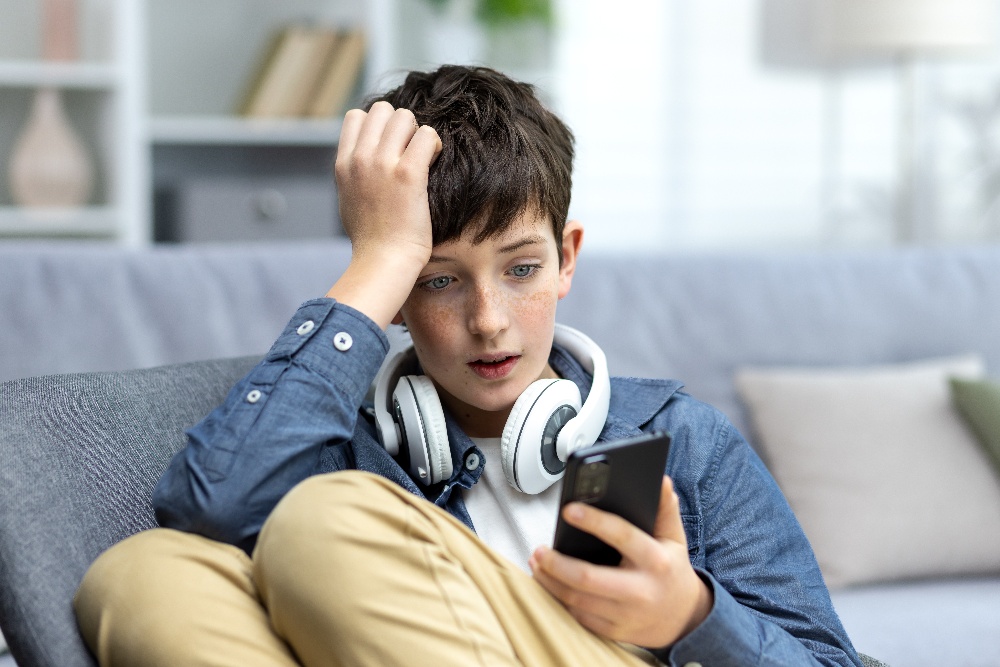How Social Media Impacts Teen Anxiety
Over the past decade, teen mental health has steadily declined alongside skyrocketing social media use. While platforms like Instagram, Snapchat, and TikTok provide connection opportunities, experts warn excessive time online correlates with rising anxiety and depression in adolescents.
It’s no coincidence anxiety and depression are spiking as teens immerse in digital worlds full of relentlessly curated content and social pressures. But how exactly is social media provoking anxiety, and what can concerned parents do?

Table Of Content
- The False Perception Effect
- Cyberbullying and Online Targeting
- Digital Distraction and Sleep Disruption
- Empowering Teens Through Awareness
- Securing Healthy Connections Beyond Screens
The False Perception Effect
A major source of teen anxiety stems from social media depicting filtered versions of others’ lives, leading to false perceptions.
-
Teens consume streams of peers’ and influencers’ carefully edited “highlight reels” showing off beautiful appearances, exciting adventures, and picture-perfect friend groups.
-
Viewing a non-stop flow of positivity and perfection cultivated for “likes” leads teens to assume everyone else’s lives and inner worlds are flawless.
-
By comparing their unfiltered realities against others’ fabricated online facades, teens feel inadequate, anxious, and left out.
Stanford researchers found teens who heavily use social media are more likely to feel left out and lonely. Platforms based on images like Instagram provoke the most social comparison anxiety. Teens also report social media fuels anxiety over missing experiences their online connections share.
The False Perception Effect drives anxiety over not measuring up, missing out socially, failing to garner validation through “likes,” and generally feeling left behind in comparison to peers’ online presences.
Cyberbullying and Online Targeting
Another social media trend that exacerbates teen anxiety involves online harassment in various forms. Unfortunately, cyberbullying continues growing more pervasive and insidious.
-
Over 25% of teens report being cyberbullied, with social media and texting providing easy vehicles.
-
Anonymity emboldens bullies while globally amplifying their attacks’ impact and permanence.
-
Teens report online harassment over physical appearance, grades, athletic abilities, culture, or religion as significant sources of anxiety.
-
Sexual harassment like unsolicited explicit images is extremely distressing for many young girls on social platforms. Others face damaging rumors spread digitally.
-
Seeing peers targeted also creates vicarious anxiety, as teens worry they could be next.
With social media woven into teen relationship dynamics, ongoing vulnerability to public humiliation, exclusion, or harassment provokes intense anxiety. The destructive behavior too often goes unchecked.
Digital Distraction and Sleep Disruption
Beyond social effects, teens’ constant digital immersion produces biological impacts that fuel anxiety as well:
-
Excessive LED exposure before bed suppresses the sleep-inducing hormone melatonin, reducing restorative REM sleep critical for emotional regulation.
-
Insufficient sleep destabilizes mood and heightens base anxiety levels. Teens average 2 fewer hours of nightly sleep now versus 20 years ago.
-
Multitasking between digital activities like social media, web surfing, streaming, and gaming overtaxes developing brains not equipped to continually shift attention.
-
Social media and text alerts trigger fight-or-flight anxiety responses even while trying to focus elsewhere.
-
Reduced in-person interaction deprives teens of human intimacy and touch, which are shown to decrease stress hormones like cortisol. Anxiety festers in isolation.
Overdependence on devices harms sleep cycles and overloads still-developing neurological systems. Anxious teens often cope via more social media use, further exacerbating the vicious cycle.
Empowering Teens Through Awareness
Although alarming, understanding specific impacts like the false perception effect, cyberbullying, and biological disruption allows parents to have constructive dialogues that can equip teens to use social media mindfully.
-
Discuss the manipulative nature of digital facades versus reality. Guide them to view posts more critically instead of as comparison points.
-
Teach teens to recognize anxiety triggers online tied to specific accounts or experiences like social exclusion or appearance focus. Unfollow or limit use of anxiety-provoking features.
-
Establish dedicated digital-free zones or times at home to allow psychological rest from social bombardment.
-
Learn about privacy controls and reporting mechanisms. Help teens block or restrict bullies and inappropriate content.
-
Model healthy usage habits yourself. Don’t scroll through feeds excessively around teens.
Awareness allows teens to employ social media with intention rather than letting it control anxiety levels. Mastering life online requires learning it distorts reality and harms mental health when used recklessly.
Securing Healthy Connections Beyond Screens
While social platforms present risks, human connection remains vital for teens. Help them cultivate community in positive offline settings:
-
Encourage more face-to-face friend gatherings for genuine bonding. Teens still crave in-person activities, communication, and vulnerability. Provide transportation help to hangouts if needed.
-
Explore interest-driven groups like arts, music, sports, volunteering, or hobbies. Finding sense of belonging beyond social media provides comfort.
-
Ask about peers making them feel accepted, valued, and secure. Reinforce connecting more with caring allies.
-
Schedule relaxing family time and outings to model close relationships.
Protecting teen mental health requires some selective unplugging to rediscover trustworthy in-person bonds away from digital facades. Help teens determine which connections create confidence versus anxiety. With balance, they can maximize benefits while mitigating social media’s risks and anxiety-provoking impacts.
